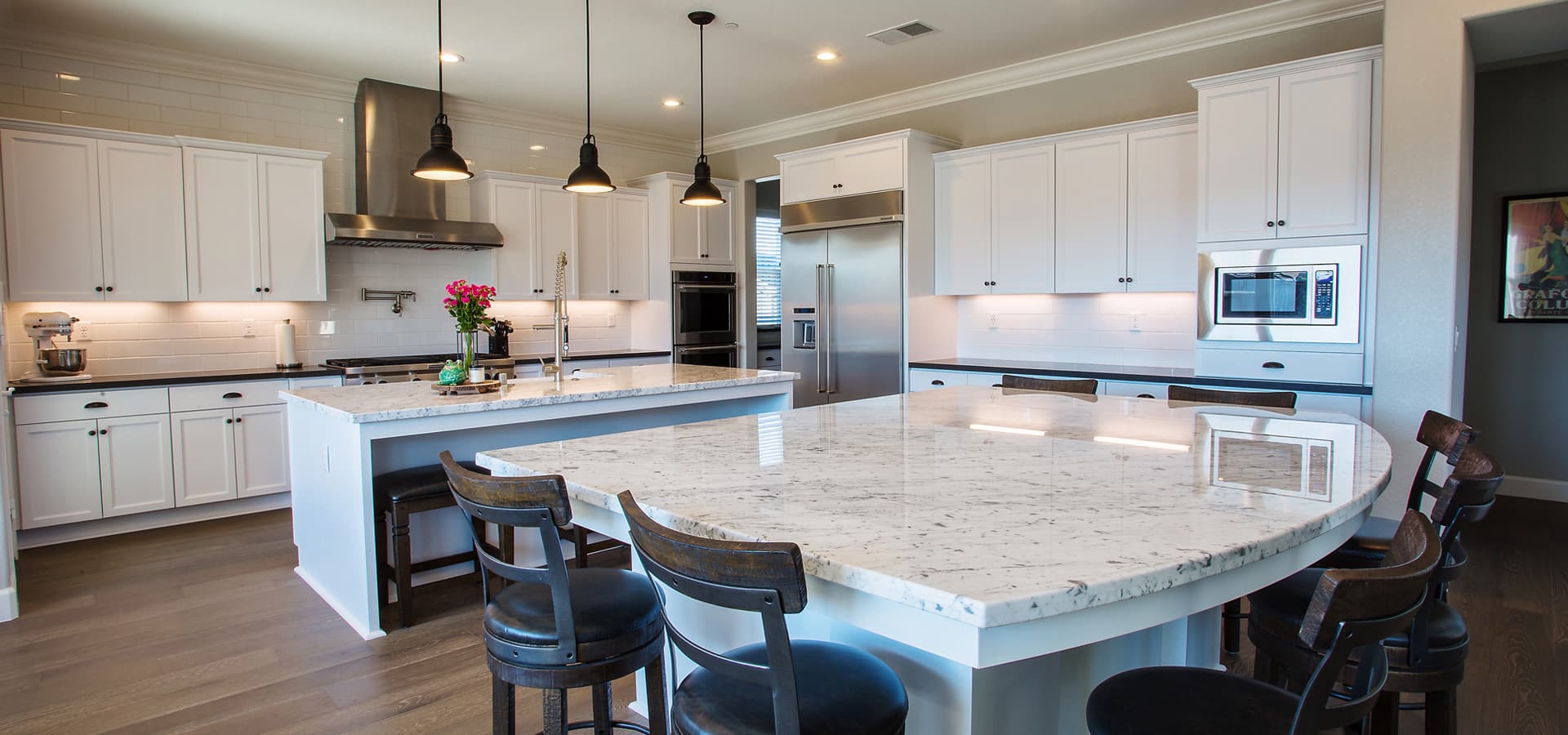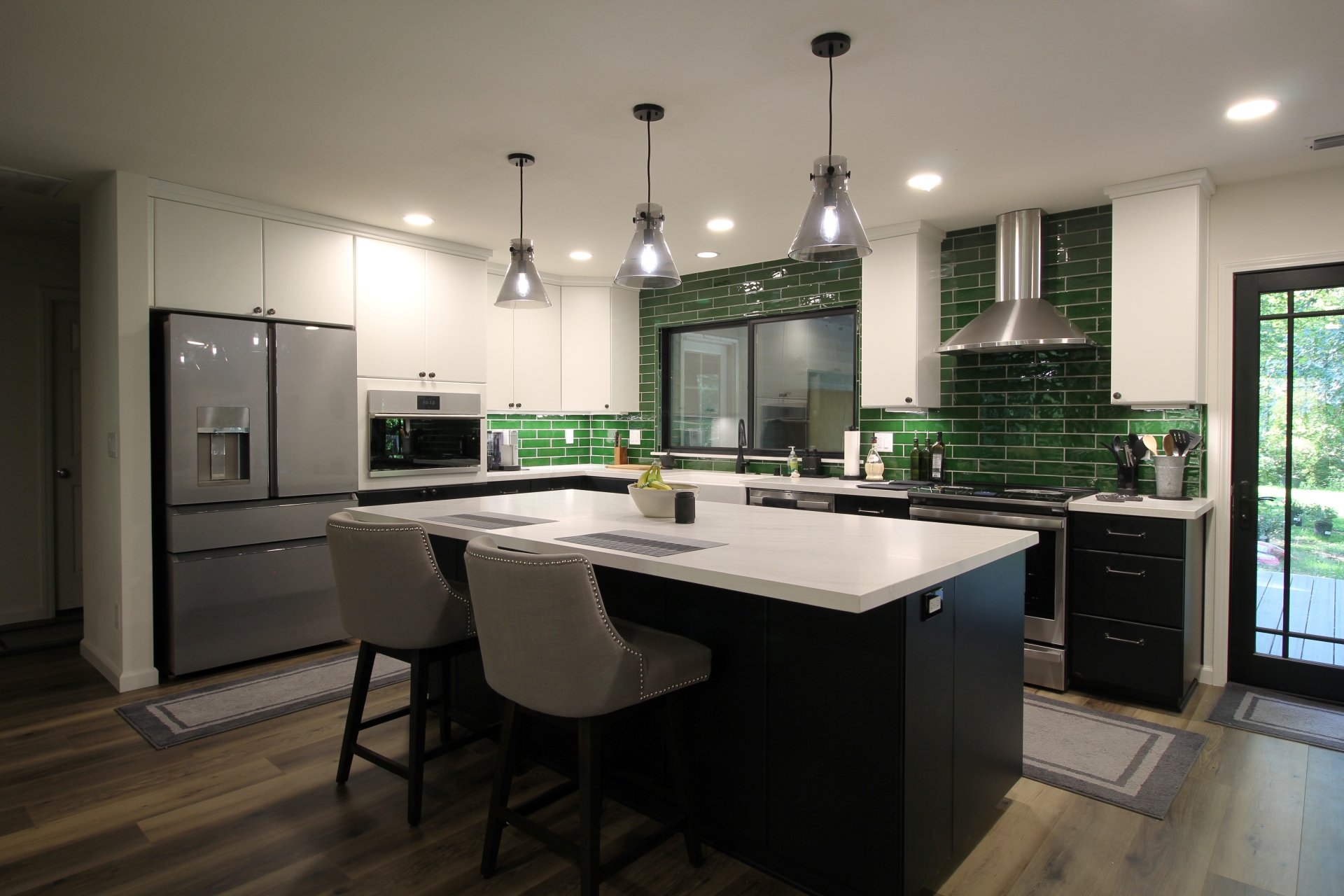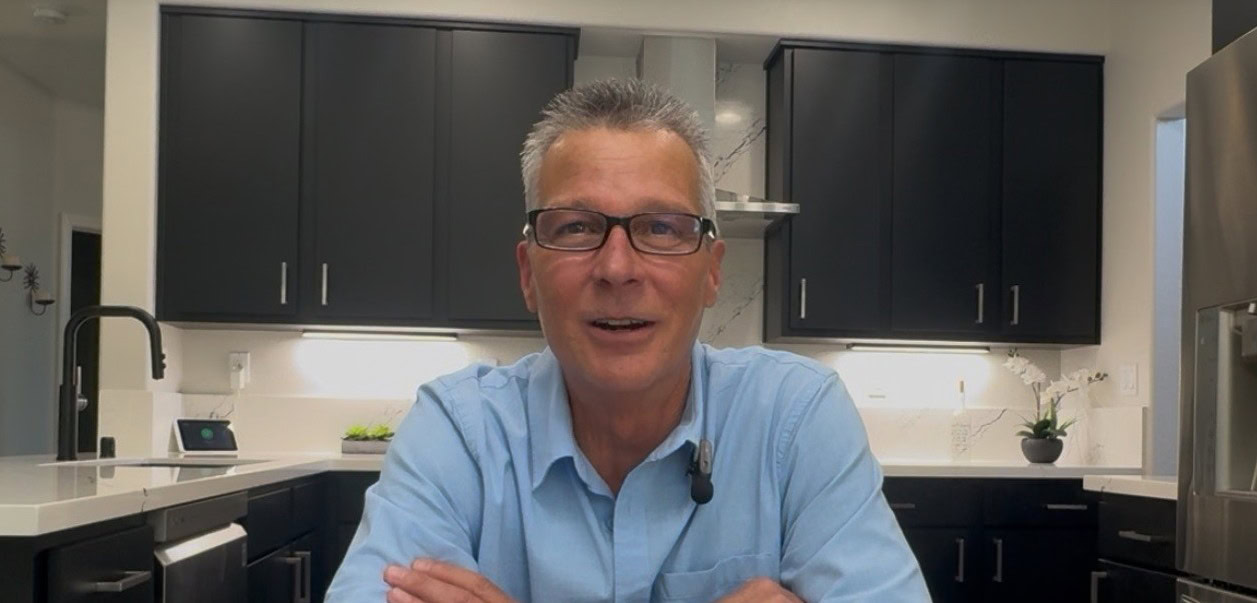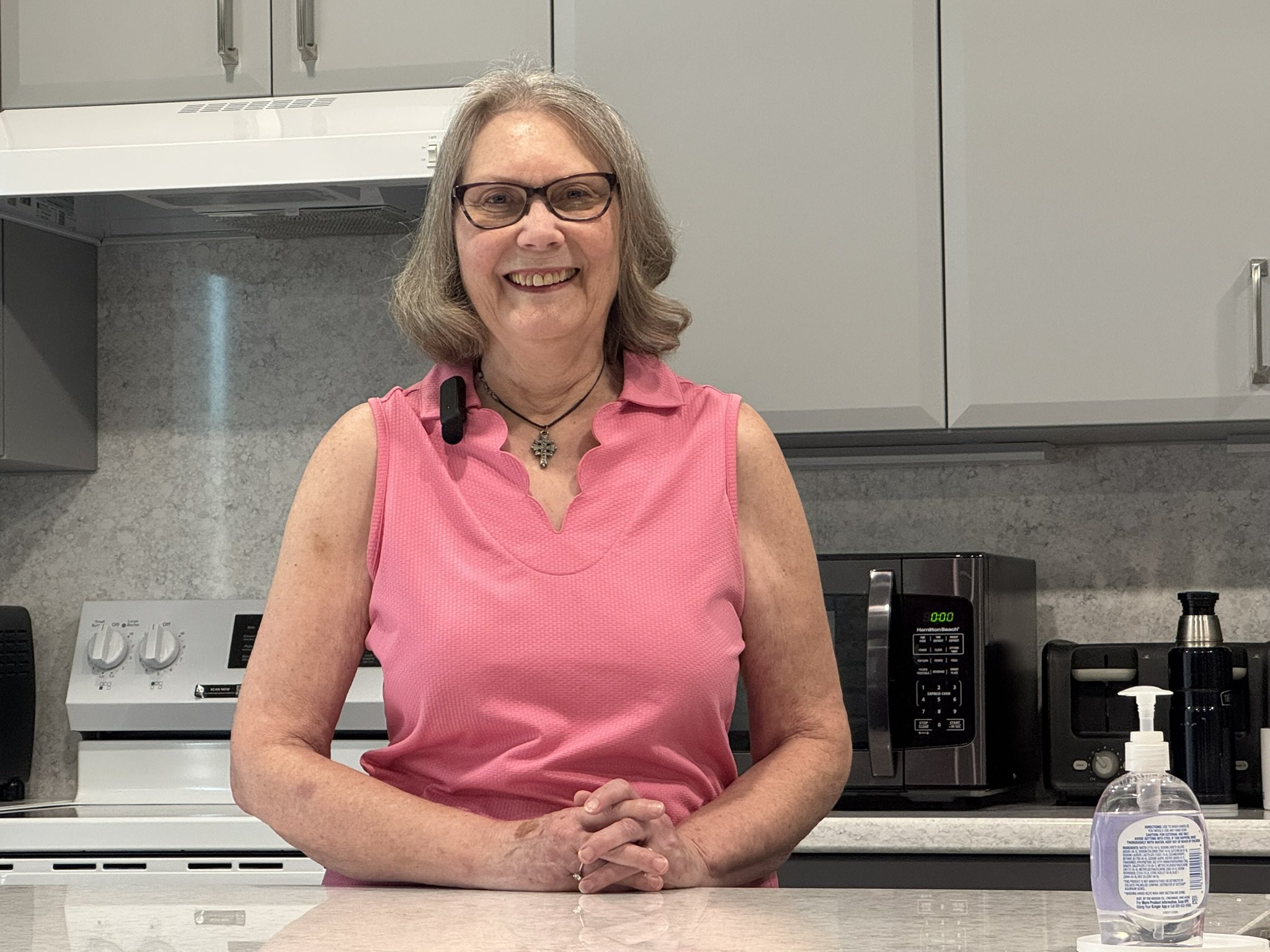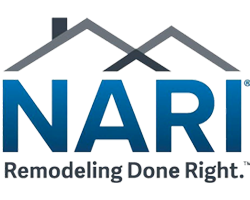Filter by Category
Search Articles
Aging-in-Place Bathroom Remodel: The Ultimate Checklist for Sacramento Homeowners
June 26, 2025
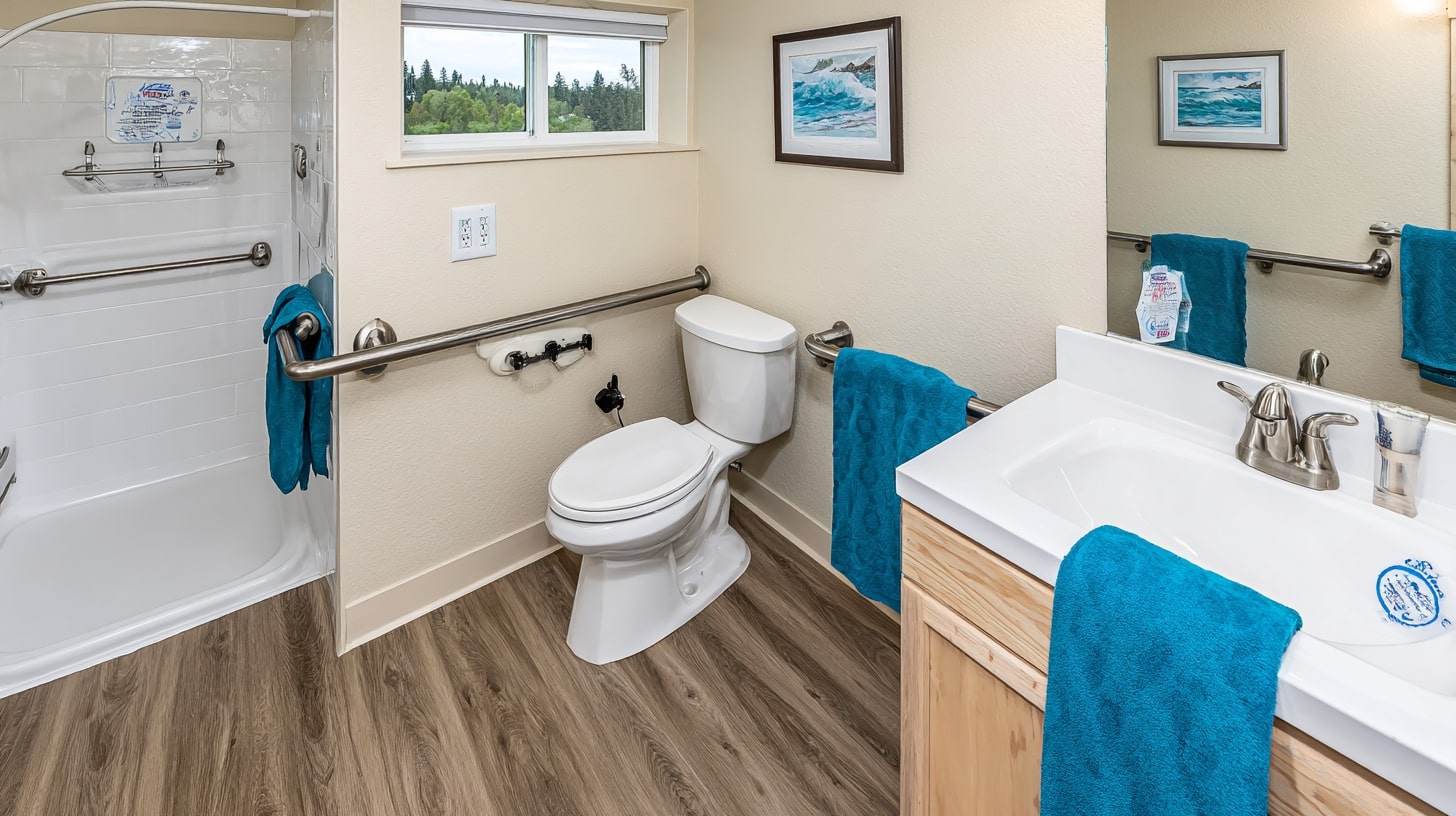
When it comes to keeping our loved ones safe as they age, the bathroom deserves our immediate attention. Here’s a sobering fact: 80% of falls in the home happen in the bathroom, with a third of those requiring hospital admission. As Sacramento’s trusted bathroom remodeling experts at Kitchen Mart, we’ve seen firsthand how the right bathroom remodel can transform a hazardous space into a haven of safety and independence.
The stakes couldn’t be higher. Falls, particularly hip fractures, can have devastating consequences for older adults. With 95% of hip fractures resulting from falls and a quarter of those patients facing life-threatening complications within six months, creating a safe bathroom environment isn’t just about comfort—it’s about preserving life and quality of life.
But here’s the good news: redesigning a bathroom for aging in place doesn’t mean sacrificing style for safety. Today’s bathroom remodeling solutions blend seamlessly into beautiful, modern designs while providing the support and accessibility our elders need. Whether you’re planning ahead for your own future or caring for aging parents, this guide will walk you through everything you need to know about creating a bathroom that promotes independence, dignity, and peace of mind.
Creating a Foundation of Safety: Flooring Solutions
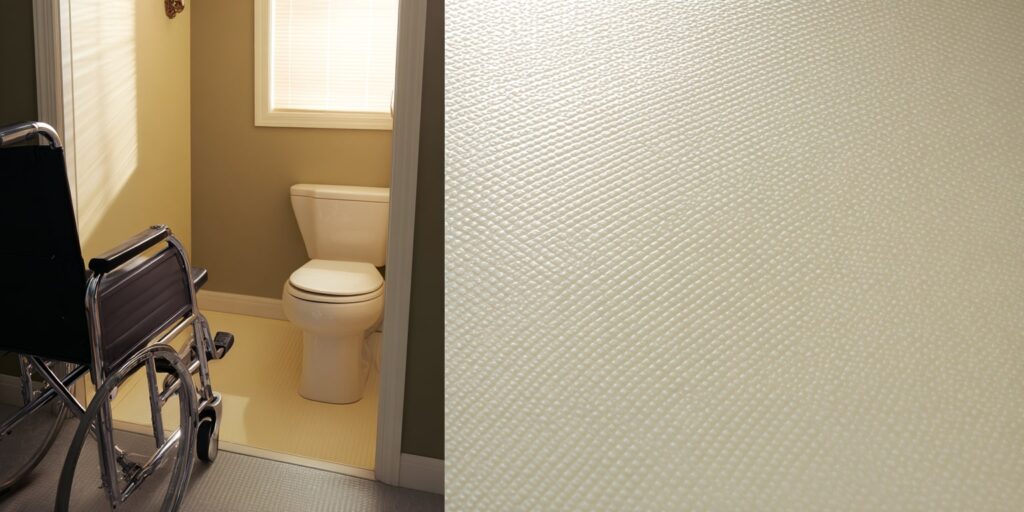
The foundation of any safe bathroom starts literally from the ground up. Slip-resistant flooring isn’t just a nice-to-have feature—it’s an absolute necessity for aging-in-place bathroom design.
Start by eliminating loose rugs and replacing them with nonslip rubber mats or, better yet, remove them entirely. While that fluffy bathroom rug might feel cozy underfoot, it’s a trip hazard waiting to happen. If you must have rugs, ensure they have rubber backing and lie completely flat against the floor.
For shower and tub floors, non-slip strips or textured surfaces are essential. These can be added to existing surfaces or incorporated into new installations. Modern options include textured tile, mosaic patterns that naturally provide grip, rubber flooring, or textured vinyl. For existing smooth floors, applying a non-slip sealer can provide additional traction without changing the appearance.
When selecting flooring materials for your bathroom remodel, consider both wet and dry traction. Some materials that feel secure when dry become dangerously slick when wet. Test samples with water before making final decisions, and remember that the goal is consistent, reliable grip in all conditions.
Revolutionizing Shower and Bathtub Accessibility
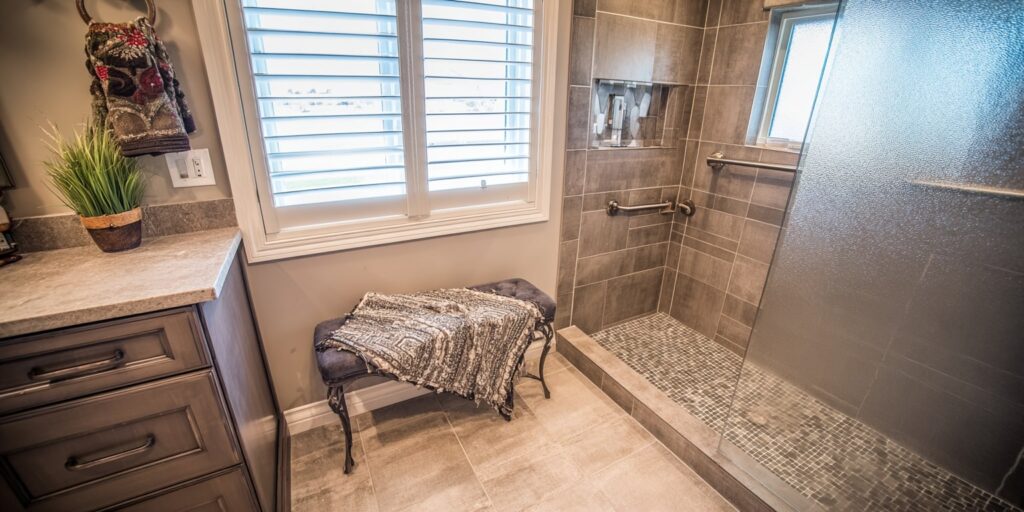
The shower and bathtub area requires perhaps the most thoughtful consideration in any aging-in-place bathroom remodel. This is where most accidents occur, but it’s also where innovative solutions can make the biggest difference.
Curbless or roll-in showers represent the gold standard for accessibility. By eliminating the need to step over a barrier, these showers provide seamless entry for those using walkers, wheelchairs, or simply dealing with balance issues. These showers create a sleek, modern look that enhances your home’s value and the investment pays dividends in safety and independence.
Walk-in showers offer another excellent option, featuring low thresholds of just 2-4 inches. This minimal step-up significantly reduces trip hazards while maintaining water containment and strikes a balance between accessibility and traditional shower design.
For those who prefer baths, walk-in tubs provide a solution that doesn’t require giving up the therapeutic benefits of soaking. These tubs feature doors that allow users to walk in before filling, built-in seating, and strategic grab bar placement. Many federal and state programs offer assistance with costs, recognizing their importance for aging in place.
Don’t overlook the importance of shower seating. Whether you choose a built-in bench, a fold-down wall-mounted seat, or a portable shower chair, having a stable place to sit transforms showering from a balance challenge into a relaxing experience. Pair this with a handheld showerhead on an adjustable slide bar, and you’ve created a flexible system that adapts to changing needs.
Temperature control deserves special attention too. Anti-scald devices and thermostatic shower valves prevent dangerous temperature spikes that can cause burns or startled reactions leading to falls. These safety features benefit everyone in the household, not just seniors.
Optimizing the Toilet Area for Safety and Dignity

The toilet area presents unique challenges that require thoughtful solutions. Standard toilets sit too low for many older adults, making sitting down and standing up difficult and sometimes painful. Comfort height toilets, positioned 17 to 19 inches from floor to seat, make transfers significantly easier. These can range from $100 to $1,600, depending on features and quality.
For those needing additional support, toilet safety frames provide lateral stability and leverage during transfers. These frames don’t require permanent installation and can be adjusted or removed as needs change. For more comprehensive support, consider grab bars specifically designed for toilet areas – a 42-inch bar on the side wall and a 36-inch bar on the rear wall, professionally installed into studs.
Modern technology offers additional solutions that promote both safety and dignity. Bidet toilet seats and smart toilets reduce the need for twisting and reaching, which can be particularly challenging for those with limited mobility or dexterity. Features like automatic flushing, heated seats, and warm water cleansing might seem luxurious, but they’re actually practical adaptations that support independence.
Placement matters too. Position toilet paper holders within easy reach, potentially in front of the toilet rather than to the side. This small adjustment can prevent dangerous reaching and twisting motions.
The Critical Role of Grab Bars
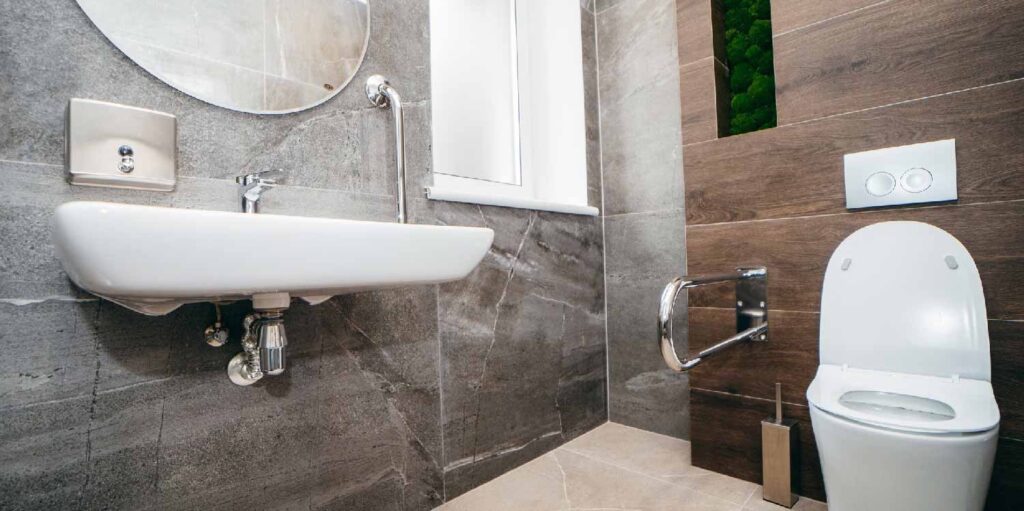
Let’s address a common misconception right away: towel bars are not grab bars. This distinction could save a life. Towel bars and decorative shelving units aren’t designed to support body weight and will likely pull from the wall under stress, potentially causing serious injury.
Professional grab bar installation is one of the most cost-effective safety improvements you can make and strategic placement is key. In the shower, install one bar on the back wall and another on the wall with controls. Near the bathtub, place bars where they’ll assist with entering, exiting, and lowering into the tub.
Modern grab bars have come a long way from institutional-looking steel tubes. Today’s options include decorative finishes that match your fixtures, “stealth” bars that double as towel holders or shelves, and even bars with integrated lighting for enhanced visibility. The key is ensuring they’re properly anchored into wall studs or with appropriate mounting systems for tile walls.
Illuminating Safety Through Smart Lighting
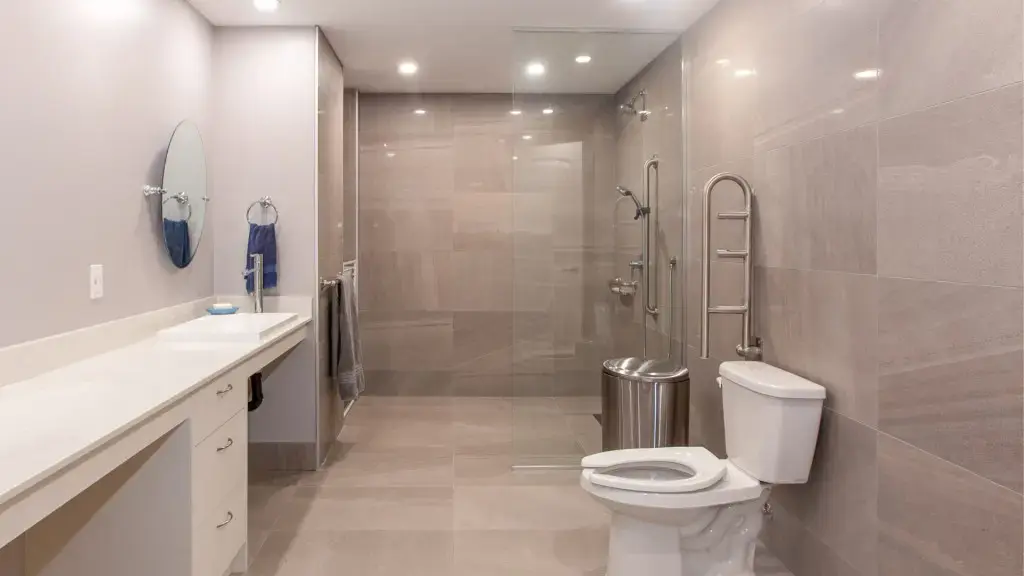
Proper lighting transforms a bathroom from a hazard zone into a safe, navigable space. Aging eyes need significantly more light than younger ones, and the right lighting strategy addresses this need without creating glare or harsh shadows.
Layer your lighting approach. Start with ambient lighting that provides overall illumination, then add task lighting at the vanity and in the shower area. Accent lighting can highlight critical areas like grab bars or level changes. This multi-level approach ensures no dark corners or shadows that might hide hazards.
Motion-sensor lights are game-changers for nighttime bathroom visits. They eliminate fumbling for switches in the dark and provide immediate illumination when needed. Install them strategically along the path from bedroom to bathroom and within the bathroom itself.
Consider dimmable options that allow adjustment for different times of day. Bright light might be needed for grooming tasks, while softer illumination works better for nighttime visits. Anti-glare fixtures and frosted bulbs reduce eye strain while providing even light distribution.
Don’t forget about switches and controls. Rocker switches or touch-activated options are easier to operate than traditional toggle switches, especially for those with arthritis or limited hand strength. Place switches at accessible heights, typically around 40 inches from the floor, and consider illuminated switches for easy location in low light.
Designing Accessible Sinks and Vanities

The sink area serves multiple purposes in a bathroom, from daily hygiene to medication management. Making this space accessible requires thoughtful consideration of height, clearance, and ease of use.
For wheelchair users, wall-mounted sinks or vanities with knee space underneath are essential. The ideal height ranges from 30 to 34 inches, with adequate clearance for knees and wheelchair footrests. Protect exposed pipes with insulation to prevent burns from hot water pipes.
Raising sinks to about 40 inches is a practical remodeling option for those who have trouble bending but don’t use wheelchairs. This adjustment reduces physical strain and makes daily tasks like washing hands or brushing teeth more comfortable. This also improves safety by lowering the risk of awkward movements, helping individuals maintain independence and confidence in their routines while continuing to live comfortably in their own homes.
Faucet selection makes a surprising difference in usability. Single-handle lever faucets require less dexterity than traditional knobs. Motion-activated or touchless faucets eliminate the need for gripping entirely, while also promoting hygiene. Look for models with temperature limiting features to prevent scalding.
Mirror placement often gets overlooked but plays a crucial role in accessibility. Install large mirrors that extend down to the backsplash, allowing users of all heights – including those seated in wheelchairs—to use them comfortably. Consider tilting mirrors that can be adjusted for optimal viewing angles.
Creating Clear Pathways and Accessible Entrances
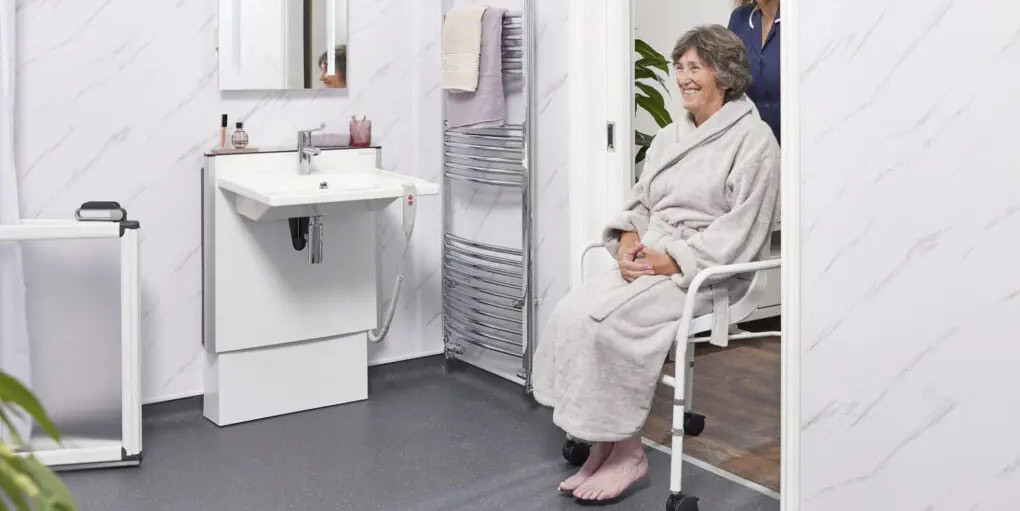
Bathroom accessibility starts at the doorway. Standard residential doorways often measure just 24 to 28 inches wide – too narrow for wheelchairs or walkers.
Inside the bathroom, maintain clear pathways. A 60×60 inch clear floor space allows wheelchair users to turn around comfortably. This might require relocating fixtures or choosing wall-mounted options that don’t impede floor space. Remove any unnecessary furniture or storage units that create obstacles.
Door style matters too. Traditional swing doors can be difficult to navigate with mobility aids and reduce usable space inside the bathroom. Consider pocket doors that slide into the wall, barn-style sliding doors, or even replacing doors with curtains for the easiest access.
Smart Storage and Accessibility Tools
Accessible storage keeps daily necessities within easy reach, reducing the need for stretching, bending, or climbing. Install open shelving or pull-out drawers at heights between 15 and 48 inches from the floor. This range accommodates both seated and standing users without requiring excessive reaching.
Medicine cabinets should be mounted lower than traditional heights, with the bottom shelf no higher than 44 inches from the floor. Consider models with pull-down shelves or lazy Susan mechanisms for easier access to items in back.
Long-handled tools expand independence. Reachers help retrieve dropped items without bending, while long-handled sponges and brushes make it possible to wash feet and legs while seated. These simple tools, often costing less than $30 each, provide tremendous value in maintaining self-care abilities.
Partnering with Professionals for Success
While some accessibility modifications can be DIY projects, partnering with professionals ensures safety, code compliance, and optimal results. At Kitchen Mart, our Sacramento bathroom remodeling team includes specialists who understand the unique requirements of aging-in-place design.
Occupational therapists bring invaluable expertise to bathroom planning. They assess individual needs and recommend specific modifications, equipment, and placement strategies. Their input ensures that grab bars, seating, and other features are positioned for maximum effectiveness based on each person’s specific challenges and abilities.
For complex projects involving structural changes, ADA compliance experts and architects ensure that modifications meet legal requirements while maintaining your home’s integrity. This is particularly important for load-bearing walls or significant plumbing relocations.
Planning for the Future: A Long-Term Perspective
Successful aging-in-place bathroom design looks beyond current needs to anticipate future changes. Even if grab bars aren’t needed today, installing blocking during a remodel makes future installation simple and secure. This forward-thinking approach costs pennies during construction but saves hundreds of dollars later.
Consider universal design principles that benefit everyone, regardless of age or ability. Lever door handles, varying counter heights, and good lighting improve usability for all family members and guests. These features also increase your home’s value and marketability.
Budget planning requires balancing immediate needs with long-term goals. While comprehensive bathroom remodel budgets can seem daunting, many modifications can be phased in over time. Start with critical safety features like grab bars and non-slip flooring, then add comfort features as budget allows.
Explore financial assistance options. Many federal and state programs offer grants or low-interest loans for accessibility modifications. Veterans may qualify for additional benefits, and some insurance policies cover medically necessary modifications.
The Investment in Independence
Creating an accessible bathroom is more than a construction project – it’s an investment in independence, dignity, and quality of life. The modifications we’ve discussed don’t just prevent accidents; they empower older adults to maintain their daily routines, preserve their privacy, and age in the comfort of their own homes.
At Kitchen Mart, we’ve witnessed the transformative power of thoughtful bathroom remodeling. We’ve seen the relief on family members’ faces when they know their loved ones are safe. We’ve heard the joy in our clients’ voices when they regain the ability to shower independently. These moments remind us why this work matters.
Sacramento bathroom remodeling for aging in place doesn’t mean sacrificing style or creating an institutional atmosphere. Today’s products and design approaches seamlessly blend safety features with beautiful aesthetics. Your bathroom can be both a showpiece and a safe haven.
Remember, aging in place is about more than physical modifications – it’s about preserving the independence, routines, and dignity that make a house a home. With thoughtful planning, professional expertise, and the right modifications, your bathroom can support safe, comfortable aging for years to come.
Ready to begin your aging-in-place bathroom transformation? Contact Kitchen Mart today for a consultation with our Sacramento bathroom remodeling experts. We’ll help you create a beautiful, safe, and functional bathroom that supports independence at every stage of life. Because everyone deserves a bathroom that’s both safe and stylish – and with the right approach, you can have both.


